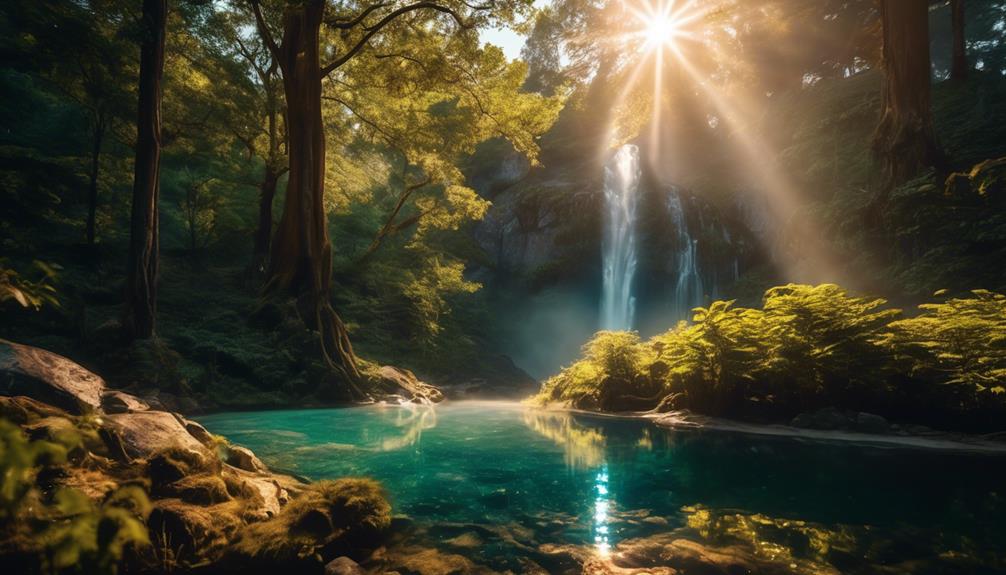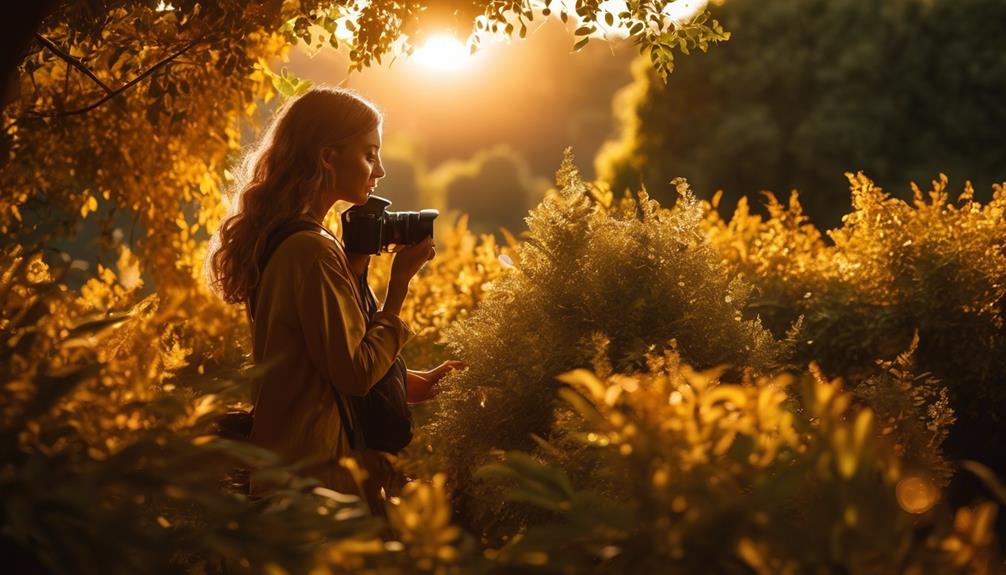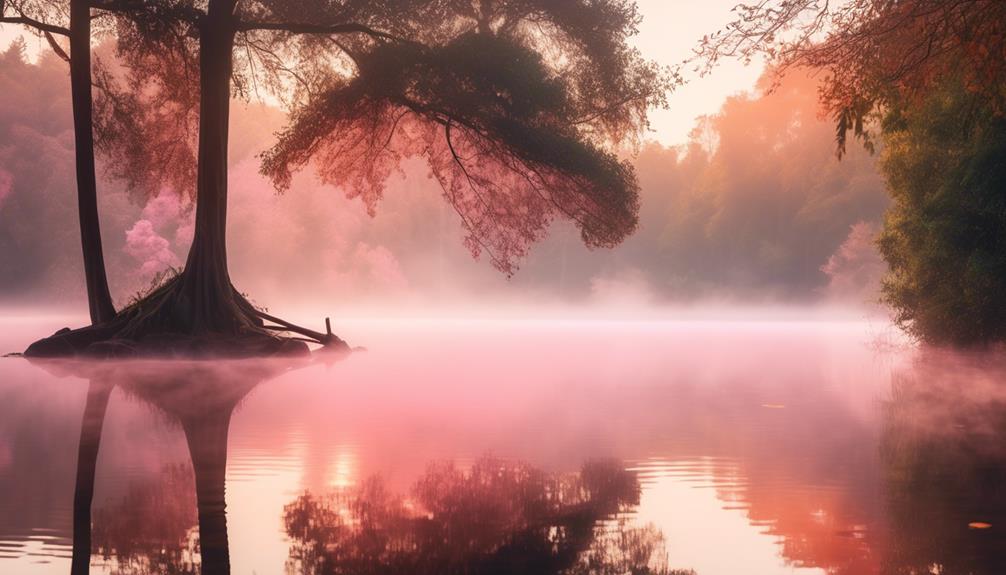Please note this post may contain affiliate links picked by me (Jay) that I have deemed may be of interest or relevant to you the reader of this.
These links do not affect the cost of the thing if you decide to purchase but i may get a little money if you choose to purchase.
For more information on my affiliate link policy click here.
As I stood there, surrounded by the serene beauty of nature, my camera in hand, I couldn't help but feel a mix of excitement and anticipation.
Capturing the perfect shot of a breathtaking landscape is like chasing a fleeting moment of magic.
But fear not, fellow photographers, for I have gathered the 5 best tips that will elevate your nature and landscape photography to new heights.
From mastering the art of composition to finding the most awe-inspiring locations, and from harnessing the power of light to perfecting your post-processing techniques, these tips will surely unlock the secrets to creating stunning images that will leave you and your viewers craving for more.
Key Takeaways
- Familiarize yourself with your camera's manual mode and learn how to control aperture, shutter speed, and ISO to have more creative control over your images.
- Experiment with different camera settings and lenses, such as wide-angle and telephoto, to capture a wide field of view and distant subjects effectively.
- Use composition techniques like the rule of thirds, leading lines, foreground interest, and negative space to create visually appealing and impactful images.
- Pay attention to lighting and exposure, including shooting during golden hour, using manual mode and histograms for proper exposure, and considering dynamic range to capture details. Additionally, focus on creating images that evoke emotions and tell stories.
Equipment Essentials
When it comes to nature and landscape photography, having the right equipment is essential for capturing those breathtaking moments in all their glory. As a photography enthusiast myself, I understand the importance of having the right camera settings and lens options to capture the beauty of the outdoors.
Let's dive into the world of equipment essentials for nature and landscape photography.
First and foremost, let's talk about camera settings. When shooting nature and landscapes, it's crucial to have a good understanding of your camera's manual mode. This allows you to have full control over settings like aperture, shutter speed, and ISO, giving you the flexibility to capture the scene exactly as you envision it. Experimenting with different settings will help you find the perfect balance of light, depth of field, and sharpness.
Now, let's move on to lens options. One of the most popular lenses for nature and landscape photography is the wide-angle lens. This type of lens allows you to capture a wide field of view, perfect for capturing the vastness of landscapes. Additionally, a telephoto lens can be useful for capturing distant subjects like wildlife or mountains. Having a variety of lens options will give you the flexibility to capture different perspectives and compositions.
Composition Techniques
Now that we've the right equipment in hand, let's explore the art of composition techniques to truly bring your nature and landscape photography to life. Composition is all about how you arrange the elements within your frame to create a visually appealing and impactful image.
Here are four composition techniques that will take your photography to the next level:
- Rule of Thirds: Imagine dividing your frame into a 3×3 grid, and place the main subject or points of interest along these gridlines or at their intersections. This creates a more balanced and harmonious composition, making your photo more pleasing to the eye.
- Leading Lines: Utilize natural or man-made lines within your scene to guide the viewer's eye towards the main subject. These lines can be roads, rivers, fences, or even tree branches. Leading lines add depth and draw attention to the focal point of your photo.
- Foreground Interest: Incorporate interesting elements in the foreground to add depth and create a sense of scale. This could be rocks, flowers, or any other object that complements the overall composition. It helps create a more immersive experience for the viewer.
- Negative Space: Don't be afraid of empty spaces in your composition. Negative space, when used effectively, can enhance the visual impact of your main subject and convey a sense of solitude or tranquility.
Lighting and Exposure Tips
I absolutely love capturing the perfect lighting and exposure in my nature and landscape photography. It's like a dance between the elements and my camera, where I've to find the right balance to create stunning images. When it comes to lighting, one of my favorite techniques is night photography. The darkness of the night sky offers a whole new world of possibilities. I bring a tripod to keep my camera steady and use a long exposure to capture the stars and the beauty of the night. It's truly magical.
Another favorite technique of mine is shooting during the golden hour. This is the hour after sunrise or before sunset when the light is soft and golden, creating a warm and ethereal atmosphere. During this time, the colors in the landscape become more vibrant and the shadows more dramatic. It's the perfect opportunity to capture breathtaking images.
To ensure proper exposure, I always shoot in manual mode and make use of the histogram on my camera. This handy tool helps me understand the distribution of light in my image and make adjustments accordingly. I also pay attention to the dynamic range, making sure to capture details in both the highlights and shadows.
Mastering lighting and exposure is a continuous learning process, but it's incredibly rewarding. It allows me to create images that evoke emotions and tell stories. So, go out there and experiment with different lighting techniques, whether it's capturing the stars at night or basking in the warm glow of the golden hour. The possibilities are endless.
Finding the Perfect Locations
Finding the perfect locations for nature and landscape photography is like embarking on a treasure hunt, where every step leads to breathtaking vistas and hidden gems waiting to be captured through the lens. It's an exhilarating experience that requires a combination of exploration and research.
So, let's dive into the world of discovering the most photogenic spots in nature with these innovative tips:
- Explore local trails: Don't be afraid to venture off the beaten path and explore the trails in your area. You'll be amazed at the untouched beauty that awaits you. From serene lakes to majestic mountains, these trails offer endless possibilities for stunning photographs.
- Research scenic spots: Before heading out, do your homework. Use online resources, guidebooks, and even social media to find popular scenic spots in your chosen area. But don't limit yourself to the well-known locations; sometimes the best shots are found in hidden corners.
- Follow the light: Light is the key to capturing the magic of nature. Pay attention to the time of day and the direction of the sun. Sunrise and sunset often provide the most dramatic lighting conditions, casting a warm glow over the landscape.
- Embrace spontaneity: While research is essential, don't be afraid to go with the flow. Sometimes the most incredible photo opportunities present themselves unexpectedly. Trust your instincts and be open to embracing the beauty that unfolds before you.
Post-Processing and Editing Techniques
Once you have captured those stunning nature and landscape photographs, it's time to bring them to life through the magic of post-processing and editing techniques. This is where you can take your images from good to breathtaking.
One technique that can really enhance your nature and landscape photos is HDR photography. HDR stands for High Dynamic Range, and it allows you to capture a greater range of light and detail in your images. By merging multiple exposures of the same scene, you can create a final image that showcases the full range of tones, from the darkest shadows to the brightest highlights. This technique is particularly useful when photographing landscapes with extreme contrasts, such as a sunset against a dark foreground.
Another important aspect of post-processing is color grading. This technique involves adjusting the colors in your image to create a specific mood or atmosphere. By tweaking the saturation, hue, and luminance of different colors, you can completely transform the look and feel of your photograph.
For example, you can give your landscape photo a warm and inviting feel by enhancing the golden tones of the sunset, or you can create a moody and mysterious atmosphere by desaturating the colors and adding a cool blue tint.
Frequently Asked Questions
How Can I Protect My Camera Equipment From Water Damage While Shooting in Nature?
When it comes to protecting my camera equipment from water damage while shooting in nature, I rely on waterproof camera gear and a camera rain cover. These innovative tools provide a shield against rain, splashes, and even unexpected water encounters.
Are There Any Specific Legal Restrictions or Permits Required for Photographing Certain Landscapes or Wildlife?
Legal restrictions and permits required for photographing certain landscapes or wildlife can vary depending on the location. It's important to research and understand the specific regulations in each area before heading out with your camera.
Some places may require permits for commercial photography or have restrictions on photographing protected species.
Being aware of these rules not only ensures you stay on the right side of the law but also helps in preserving and respecting the natural environment and wildlife.
What Are Some Important Safety Precautions to Keep in Mind When Shooting in Remote or Potentially Hazardous Locations?
When shooting in remote or potentially hazardous locations, safety measures are crucial. It's important to always be prepared and aware of your surroundings.
Protecting your equipment is also essential to ensure it doesn't get damaged. I can't stress enough the importance of packing the right gear and wearing appropriate clothing.
Stay alert and be cautious, but don't let it dampen your enthusiasm for capturing breathtaking moments in nature. Safety first, innovation second!
How Can I Capture Unique and Creative Perspectives in Nature and Landscape Photography?
To capture unique and creative perspectives in nature and landscape photography, I always strive to find those one-of-a-kind angles and compositions that make my shots stand out.
By exploring different vantage points, experimenting with framing, and playing with lines and patterns, I can create visually striking images that leave viewers in awe.
It's all about thinking outside the box and pushing the boundaries of traditional photography.
Are There Any Ethical Considerations to Keep in Mind When Photographing Wildlife or Delicate Ecosystems?
When photographing wildlife and delicate ecosystems, it's crucial to consider the ethical implications. Respecting the natural habitats and the well-being of the animals should be our top priority. Avoid disturbing their natural behavior or damaging their habitats.
It's important to maintain the delicate balance of these ecosystems so future generations can continue to enjoy their beauty. By being mindful of these ethical considerations, we can capture stunning images while also protecting and preserving the wonders of nature.
Conclusion
In conclusion, nature and landscape photography is a thrilling journey that requires the right equipment, a keen eye for composition, and a knack for capturing the perfect lighting and exposure.
By exploring breathtaking locations and employing post-processing techniques, you can transform your images into stunning works of art.
So grab your camera, embrace the beauty of nature, and let your creativity soar.
Happy shooting!


